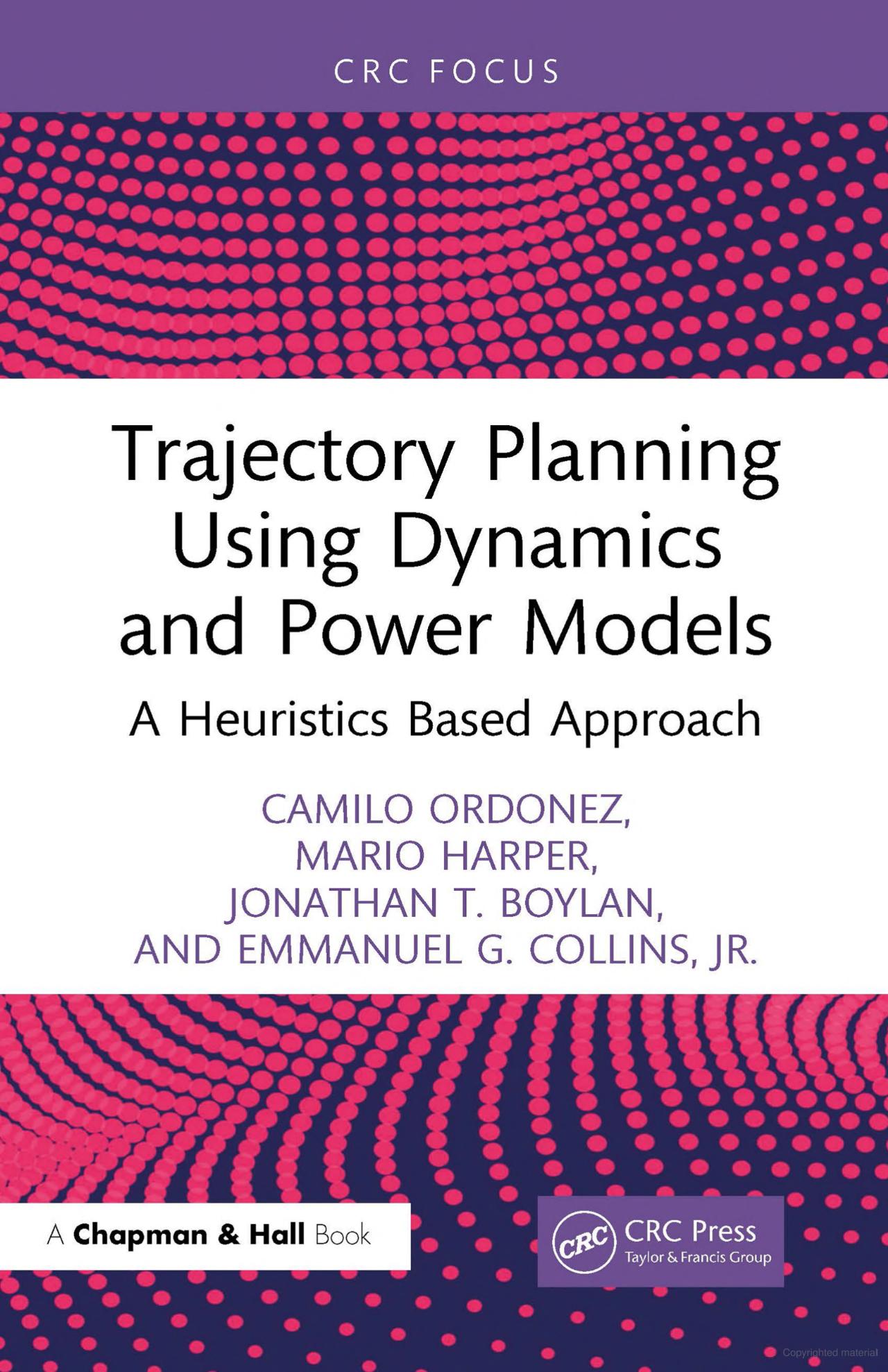ASPIRE Researcher’s First Book Officially Published


ASPIRE’s data co-lead Mario Harper — known to his students as Dr. Mario, or simply Mario — has successfully published his first book “Trajectory Planning Using Dynamics and Power Models: A Heuristics Based Approach”, with a heuristics-based approach referring to a practical, experience-driven method to efficiently solve problems. Dr. Mario was inspired to write this book in response to frustration with traditional control methods’ oversimplification of dynamics or failure to incorporate energy consumption, leading to a model that doesn’t reflect reality.
“I made a new algorithm that steps into the messy business of trajectory planning yet respects power constraints and physical limitations,” said the assistant professor of computer science at Utah State University. “The result is a book that’s part science, part engineering, and part therapy for anyone who’s ever screamed at a simulation that ‘technically worked’ but failed the moment wheels hit pavement.”
Dr. Mario led the research and authorship of this book, utilizing years of experience working with trajectory optimization and robot planning. He collaborated with co-authors Camilo Ordonez, Jonathan Tyler Boylan, and Emmanuel Collins to explore a thoroughly researched trajectory algorithm rooted in the physics of the systems.
The applied research in Dr. Mario’s lab, with an emphasis on a variety of systems under power limitations and dynamic constraints that must make intelligent decision, supplied much of the book’s content. Dr. Mario added, “I worked to blend analytical modeling, simulation tools, and heuristic approaches into a coherent framework accessible to both students and engineers.”
Pushing past theoretical ideologies, this book offers practical solutions through implementations, case studies, and direction on how to adapt models to a variety of technology, from robots to vehicles.
“It reflects a broader philosophy we hold in the ASPIRE center: intelligent systems should make decisions that respect physical constraints, resource limitations, and real operational environments,” Dr. Mario said. “Whether someone is working on drones, planetary rovers, or electrified transit, I hope this book provides useful tools and a way of thinking about motion that is both rigorous and deployable.”
Learn more about Dr. Mario’s innovative book and pre-order your copy here!
About ASPIRE & Utah Electrification:
Headquartered at Utah State University, ASPIRE is a National Science Foundation Engineering Research Center. ASPIRE has demonstrated expertise in developing, implementing, and managing a range of electric vehicle (EV) infrastructure projects and fostering strong partnerships across the EV charging ecosystem. The center integrates multidisciplinary expertise across electrical, civil, and mechanical engineering, as well as economics, marketing, and policy. In 2023, ASPIRE was designated the lead institution in building Utah’s Intelligent Electrified Transportation Plan. More information on the center can be found at aspire.usu.edu, and more on Utah’s electrification efforts can be found at utahelectrification.com.
Contacts:
Mario Harper
Data Co-Lead
ASPIRE ERC
Writer:
Kayleigh Kearsley
Marketing & Communications Intern
Utah State University